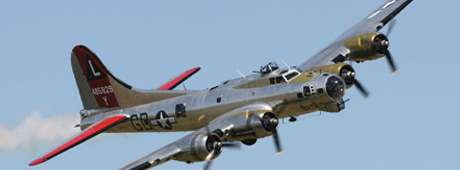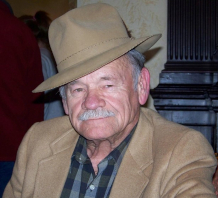No products in the cart.
Marsing Attacked

Bombs Away!
By John M. Larsen
In the air over Marsing in 2017, I saw the place where I had been bombed by the US Army Air Corps in 1945. On the day I flew over this site, I was in a B-17 called the Aluminum Overcast, which was owned by the Experimental Aircraft Association (EAA). It was being ferried from a fly-in at Caldwell to the next air show at Idaho Falls. The crew had offered to haul seven EAA club members to Idaho Falls for free and I was an EAA member who happened to be standing at the right place at the right time. I signed up in a heartbeat. Once we were in the air, the pilot put one last touch on the throttles and the four big radial engines settled into a humming harmony that combined peacefulness with subtle excitement. We guests rotated to different crew member positions inside the plane. I took my turn in the nose, where the bombardier would have been as we flew over a WWII bombing range south of Marsing: an installation that drew a lot of inadvertent “friendly fire” during the war years, including on me.
I was eight the first time I heard of a bombing near Marsing, on a cold November evening in 1943. That year, Marsing was a village of 571 people cuddling the west bank of the Snake River across from the landmark Lizard Butte. My nine-year-old pal Louie Hall and his dad were milking cows in their small barn near Givens Hot Springs, about a dozen miles south of Marsing, when their tranquility was shattered by a string of five explosions. Outside, they found a line of smoking craters a hundred feet from their barn. Aircraft engine noise rumbled away in the darkness. Daylight revealed the shattered remains of five bombs. English language markings, implying ownership by the U.S Army Air Corps, suggested they were one-hundred-pound practice bombs.
“Dad’s right,” Louie mused as he looked skyward. “These Japanese are very clever.”
The day after the bombing, I advised Louie, “They had to be Stukas.”
“What would a German Stuka be doing in Idaho?” Louie frowned. “They was Japanese Bettys.”
“Well, I ought to know,” I defended myself. “After all, I’m an aircraft spotter for the Civil Air Patrol.”
“Did you see them?” Louie asked skeptically.
“Well, not actually.” Forced now to improvise, I added, “But Stukas do things like that. My cousin Bruce flies a B-17 and he said so.”
This content is available for purchase. Please select from available options.
Register & Purchase Purchase Only
Register & Purchase Purchase Only


Comments are closed.